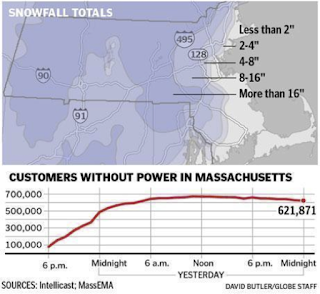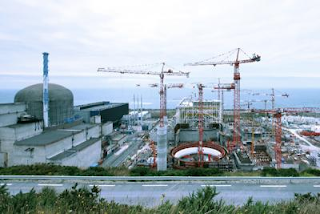Gore talked about how many people are not yet associating human health with climate change. Many of us may be aware that climate change is expanding the range of insects like mosquitos that bear diseases like Dengue Fever and West Nile Virus. But he said that many people are not aware that climate change is also expanding the range of micro-organisms themselves and as a result we are seeing an increase in many diseases.
Gore compared the climate crisis to 19th-century cholera epidemics that have been traced to water sources that had been infected by dumping sewage into the streets. Society now treats the sky as an "open sewer," pumping carbon waste into the air much as it used to dump bodily waste into waterways, and with the same results. People are getting sick.
"We're using the atmosphere as an open sewer. It's functionally insane. It traps heat," Gore said. "A lot of communities experience one in 100-year events, one in 1,000-year events … every few years."
85% of all the energy we use comes from fossil fuels. We dump 90 million tons of heat trapping CO2 into the atmosphere everyday. And we are trapping 400,000 Hiroshima bombs worth of heat in the atmosphere every day.
We have 4% more water vapor in the atmosphere than we did 30 years ago, this results in bigger floods, bigger downpours and higher energy storms.
We just saw 32" of rain in Queensland Australia over a 4 day period. 2012 was the hottest year on record for the US. We had $110 billion dollars of climate damage. Unprecedented wildfires, drought covering over 60% of the country, worst outbreak of West Nile Virus, half the polar ice cap disappeared, the jet stream affected and of course Superstorm Sandy.
We need to think about the impact of these events. Congress wonders if we have enough money to help those who have been affected. What about the 20 million people who were displaced by flooding in Pakistan - an already unstable nuclear power?
He said that even with all these events - there was not one question from the media about climate change in any of the presidential debates. "That is pathetic! The media is not playing a responsible role in our society."
He was asked what he thought about mining the tar sands for oil. "Well junkies will shoot up between their toes after the veins in their arms and legs give out."
When asked about the divestment movement - "If I were a student, I would support what you're doing," Gore told the students at Harvard. "But if I were a board member I would do what I did when we took up the Apartheid issue. This is an opportunity for learning and the raising of awareness, for the discussion of sustainable capitalism."
He said that our democracy had been hacked through the influence of money. That representatives now have to spend 5 hours a day begging for money to fund their re-election campaigns. It can't help but influence their behavior.
He said capitalism needed to be reformed as it was causing wild disruptions in the economy. When we agreed to give mortgages to 7.5 million people who couldn't afford to pay them, it caused a global run on the banks because those subprime assets weren't valued properly.
He said that the fossil fuel industry now has $23 trillion dollars worth of artificially priced subprime fossil fuel assets that the fossil fuel companies are telling their stockholders they intend to burn. He said - we can't, we just can't burn those assets if we want to have a livable climate. We need to begin to value those assets wisely. This is another bubble.
He believes the value of those fossil fuel reserves will collapse over the long-term time frames that pension funds are managed for.
Finally - we need to stop measuring our economic success in terms of GDP - because there are so many externalities it just doesn't measure.
There are negative externalities like:
Pollution
Degradation of the natural environment
But there are positive externalities that aren't measured either - like:
Education
Investment in Infrastructure
Finally he said one of the most destructive negative externalities is the distribution of income.
He mentioned that Sam Walton started an amazing company - WalMart. But when Sam passed away - 6 members of his family inherited his money. Gore said that those 6 people now have more money than all of the bottom 100 million people in America combined.


























